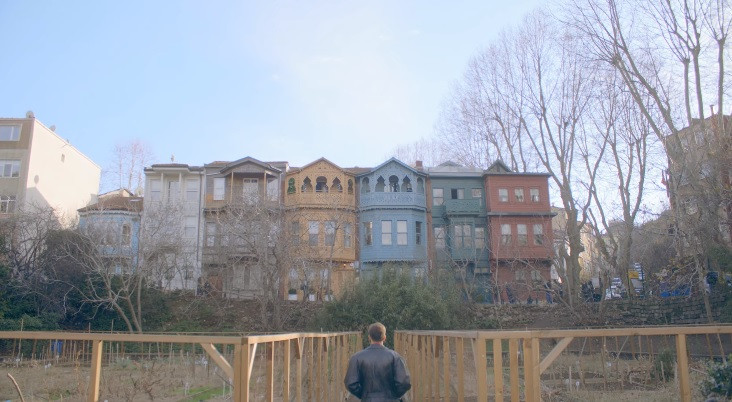Nesibe Bostanci: Video Art as Personal Evolution

Contemporary video artists often exclude themselves from the spaces of their video art works, creating a safe space or an illusion of a safe space. This safe space or armour protects the vulnerable social body of the video artist from being too open to the world, society, and repressive reality. However, the most interesting contemporary artists instead include themselves, their bodies (physical, social, repressed, or lost), in the immediate space of their video works, thus performing a transgressive act and breaking the conventional boundaries of a genre that was once associated with absolute freedom.
Nesibe Bostanci is a contemporary video artist from Turkey who boldly and enthusiastically incorporates herself into the space of her video works, exploring the themes of self-representation and self-contention. Today, I want to tell you about three key and remarkable video works by this artist that are significant milestones in the development of global video art and turning points in Nesibe Bostanci’s unique personal and creative evolution.
"A note to myself" (2019)
This impressionistic video canvas explores the fragility of perception and memory. Pastoral views and images are juxtaposed with unsettling sensory voids. It is a very brave work that cleverly disguises itself as a lightweight or frivolous chronicle. The artist’s identity in this work is exposed to the maximum extent, presenting us with a series of vulnerable spots and a series of weaknesses that we could exploit to destroy this delicate world. However, this sacrifice by the author implies an unspoken social contract where we pay with our non-intervention, where we stand at the threshold, not crossing the boundaries of the artist’s personal space, even though she has given us all the opportunities to plunder and destroy her intimate artistic space.
"Fire Grows With People" (2021)
This work reflects on the duality of perceiving the urban environment. The artist strongly employs the alternation between detached, cold urban images and warm, bodily pastel images. This work is an astonishing manifesto, a celebration of erroneous ease in dividing the world into pleasant and unpleasant, cold and warm. It is a doubt in one’s own adequacy of perceiving the world, a world in which all foundation and reliability have been lost, the swan song of the last nomad. It is simultaneously a bitter and inspiring statement about modernity.
"Can’t See" (2021)
"Can’t See" deconstructs pop culture stereotypes about typical strategies of bordering perceptions. Where pop culture tells us to be strange, everyday clichés are created. This work seems to operate through the lens of a tired, dozing traveller (the alter ego of the artist and the viewer simultaneously), with their abrupt fixation of the gaze, while ironically playing with such an optic as a cliché of the art scene and mass cinema. It is a very concise but strong and coherent statement about imposed strategies of viewing the world from the cocoon of unproductive corporeality.
I highly recommend you follow the creative career and new works of this unique video artist. She will expand your understanding of art and reality, and you will not miss the moment when contemporary art becomes more complex and fascinating right before your eyes.
Author: Jenya Stashkov, artist and art critic, Sheffield, UK
